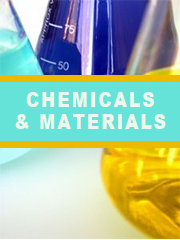TOP CATEGORY: Chemicals & Materials | Life Sciences | Banking & Finance | ICT Media

Download Report PDF Instantly
Report overview
The global Emulsion Polymer market was valued at US$ 35340 million in 2022 and is projected to reach US$ 41160 million by 2029, at a CAGR of 2.2% during the forecast period. The influence of COVID-19 and the Russia-Ukraine War were considered while estimating market sizes.
Polymer Emulsions are monomers dissolved in water. They are also known as waterborne solvent because of their high water content. They are one of the fastest growing categories of specialty chemicals in the world. Polymer Emulsions have superior usability and safety standards. Polymer emulsions also have better recyclability and lifespan when compared to solvent-borne polymers.
In this report, the polymer emulsion market is segmented on the basis of types into acrylics, vinyl acetate polymer, SB Latex, polyurethane dispersion, and others.
This report aims to provide a comprehensive presentation of the global market for Emulsion Polymer, with both quantitative and qualitative analysis, to help readers develop business/growth strategies, assess the market competitive situation, analyze their position in the current marketplace, and make informed business decisions regarding Emulsion Polymer. This report contains market size and forecasts of Emulsion Polymer in global, including the following market information:
The top 5 key players of the global Polymer Emulsions include BASF, Dow, Trinseo(Styron), Akzonobel and Wacker, with about 33% market shares. Geographically, Europe is the largest consumption place, with a consumption market share nearly 29%. Following Europe, North America is the second largest consumption place with the consumption market share of 32%.
We surveyed the Emulsion Polymer manufacturers, suppliers, distributors and industry experts on this industry, involving the sales, revenue, demand, price change, product type, recent development and plan, industry trends, drivers, challenges, obstacles, and potential risks.
Total Market by Segment:
Global Emulsion Polymer Market, by Type, 2018-2023, 2024-2030 ($ Millions) & (K MT)
Global Emulsion Polymer Market Segment Percentages, by Type, 2022 (%)
Global Emulsion Polymer Market, by Application, 2018-2023, 2024-2030 ($ Millions) & (K MT)
Global Emulsion Polymer Market Segment Percentages, by Application, 2022 (%)
Global Emulsion Polymer Market, By Region and Country, 2018-2023, 2024-2030 ($ Millions) & (K MT)
Global Emulsion Polymer Market Segment Percentages, By Region and Country, 2022 (%)
Competitor Analysis
The report also provides analysis of leading market participants including:
Key companies Emulsion Polymer revenues in global market, 2018-2023 (Estimated), ($ millions)
Key companies Emulsion Polymer revenues share in global market, 2022 (%)
Key companies Emulsion Polymer sales in global market, 2018-2023 (Estimated), (K MT)
Key companies Emulsion Polymer sales share in global market, 2022 (%)
Further, the report presents profiles of competitors in the market, key players include:
Outline of Major Chapters: